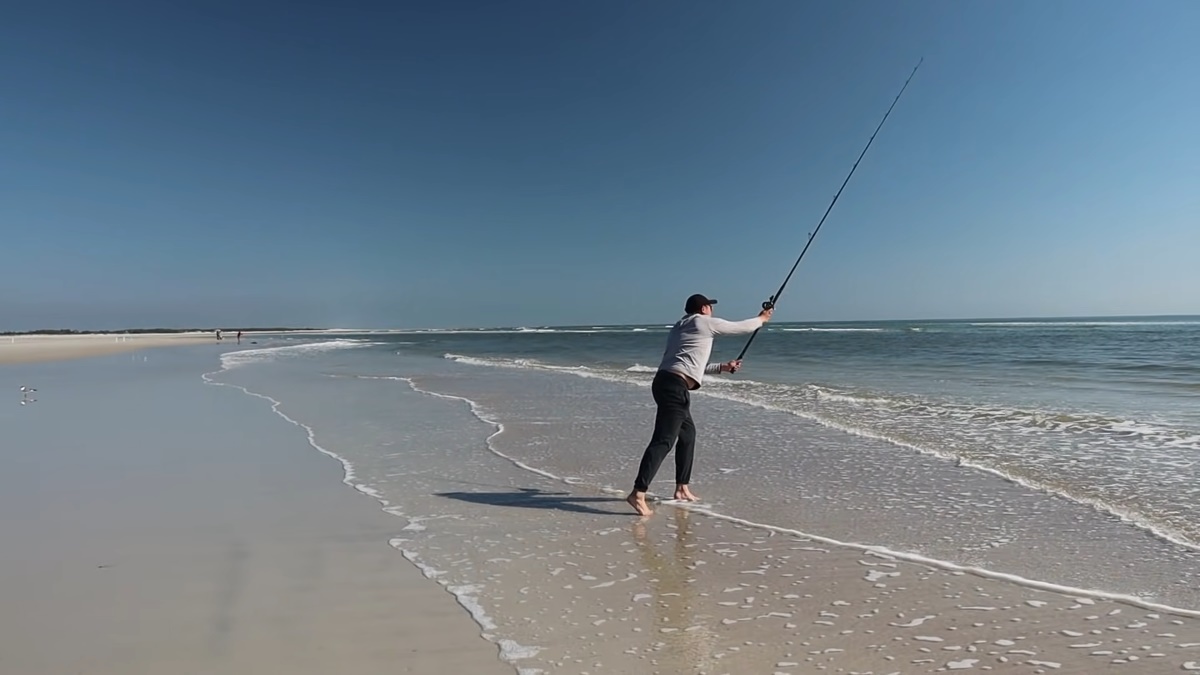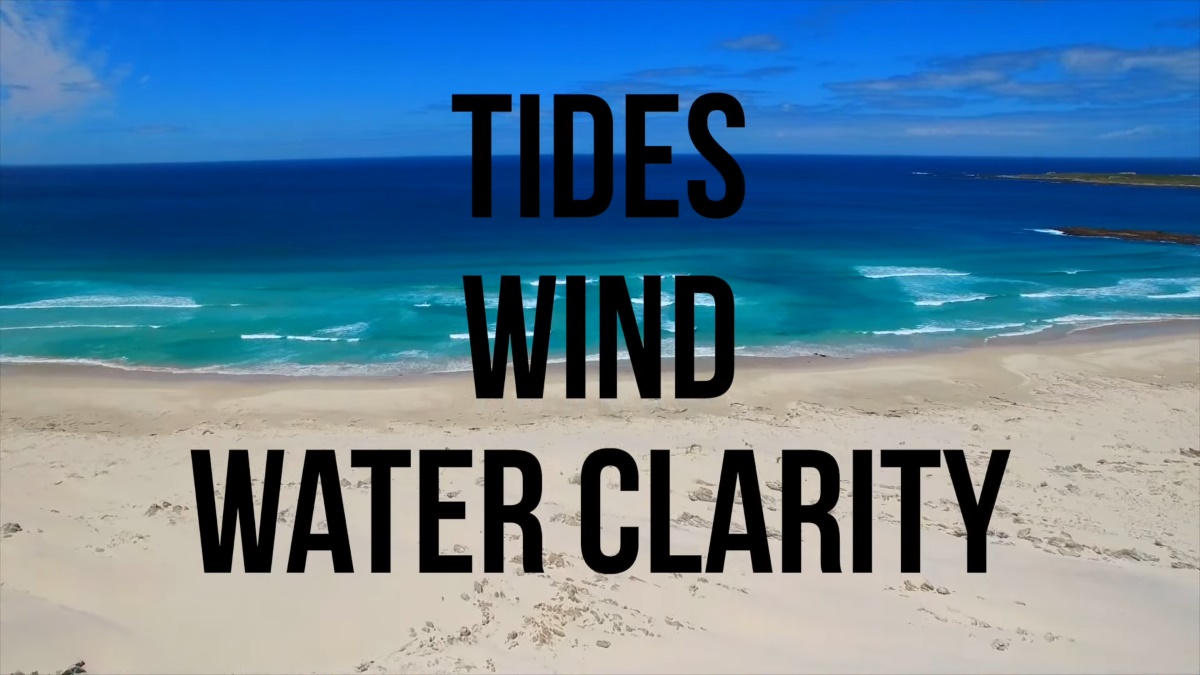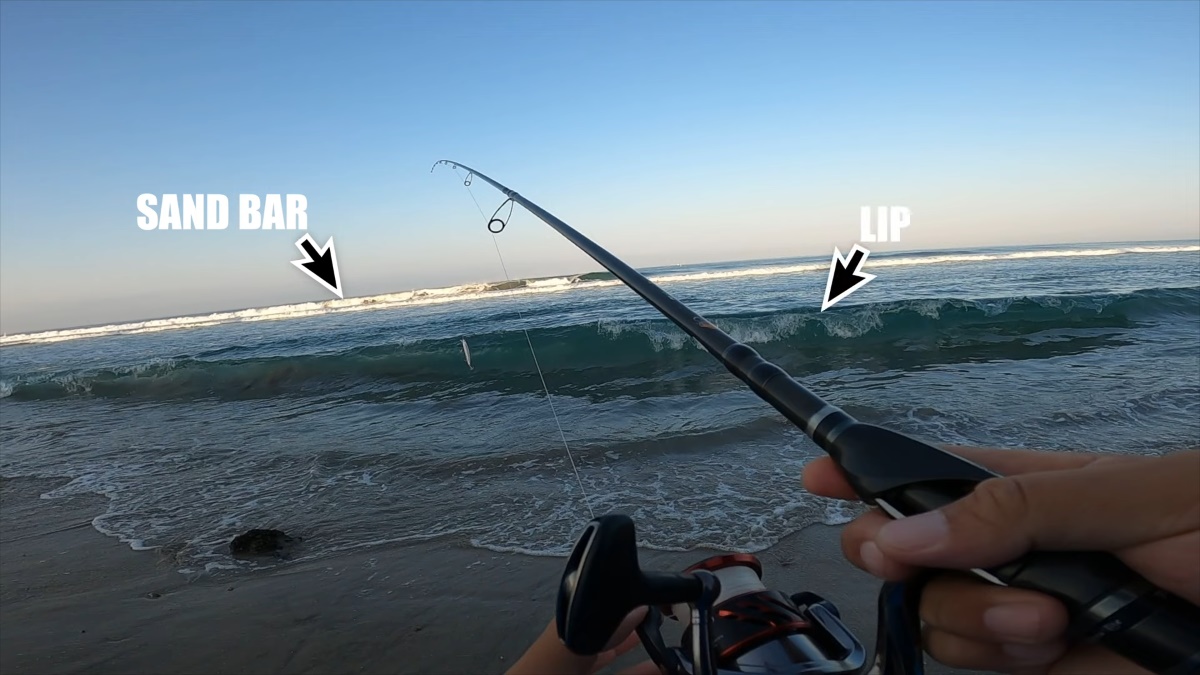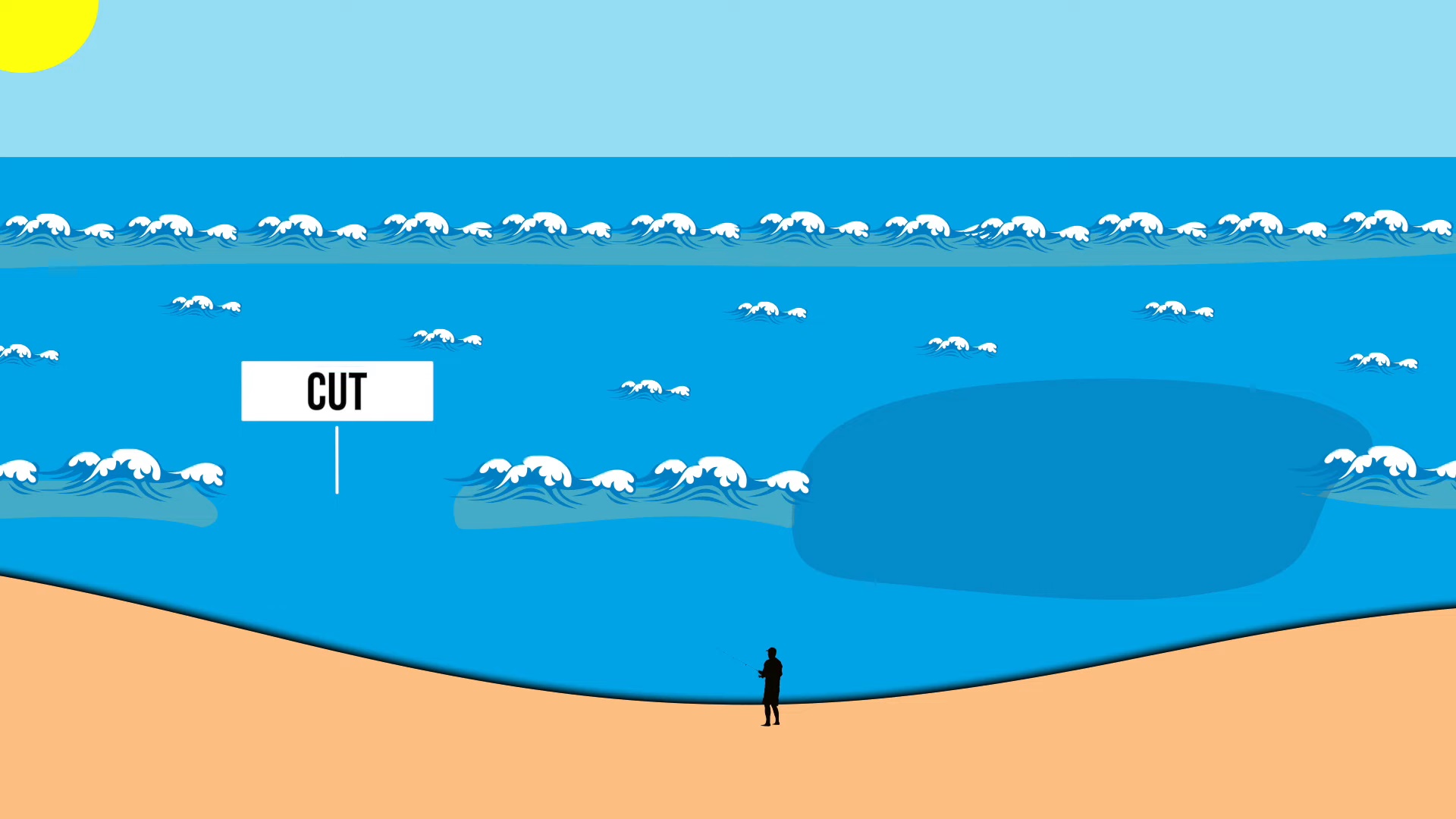Have you ever wondered where the best places to cast your line when surf fishing are? Deciphering the surf and knowing where to cast surf fishing can make all the difference between an empty hook and a perfect catch. Our guide will give you knowledge and strategies to elevate your surf fishing skills. From understanding the impact of channels and sandbars to spotting the signs of feeding fish, you’ll learn how to find the optimal casting spot to maximize your chances of success.

What Is Casting Surf Fishing?

Casting surf fishing is a type of fishing that involves standing in shallow water near the shore and using a rod to cast bait into deeper waters.
It requires special techniques, such as overhead casting or pendulum cast, to maximize the distance of your casts.
Surf fishing can be practiced from various locations, such as a beach, pier, jetty, or boat, but it necessitates meticulous assessment of conditions, including tides and rip currents, to optimize outcomes.
Read more surf fishing for beginners tips and tricks on our website. Learn how to choose the right gear, locate productive fishing spots, select lures, and more!
We have all the information you need to become an expert surf fisherman! With accurate advice from experienced anglers, you can make the most of your time spent casting in search of that perfect catch.
Reasons Why People Must Know Where To Cast When Surf Fishing
Knowing where to cast when surf fishing is essential for success and enjoyment.
First and foremost, having a comprehensive understanding of the beach’s topography facilitates the quick and efficient identification of troughs, channels, sandbars, and other potential factors that may impact fish movement in the vicinity.
Furthermore, identifying the right casting spot allows you to target fish much more efficiently.
Additionally, understanding the factors that affect how far a person can cast will allow them to maximize their distance and have more room to explore different depths for different types of fish.
Factors To Consider When Surf Fishing
Several factors must be considered regarding surf fishing to find the best casting spot.
The channels
Channels are areas of deep water that run parallel to the shoreline and can be used as an excellent place to cast your line. They will often have a different type of bottom composition than the one around them, which makes them ideal for fishing.
To identify channels, look for subtle changes in the color of the water or for patches of seaweed or other debris.
You may observe fish actively moving in and out of the channel, suggesting that this location is favorable for casting your line.
The sandbars
Sandbars are long ridges of sand found just offshore and can be a great place to cast your line.
While they may look like any other part of the beach, they often have much marine life around them due to their unique structure.
To identify sandbars, look for patches of darker water or signs of breaking waves in an otherwise calm area.
Seeing the water becoming more shallow and close to the shoreline could indicate that the sandbar is nearby.
The troughs
Troughs are depressions in the ocean floor that form around channels and sandbars. These deep spots provide shelter for many types of fish, making them a great place to cast your line when surf fishing.
To identify troughs, look for areas of darker water or signs of fish breaking the surface. The presence of floating debris could also be a sign that you’ve found an excellent spot to cast your line.
In addition to these indicators, ask local bait shops or other anglers about any particular spots they recommend.
What Will Affect Where to Cast Surf Fishing?

When it comes to surf fishing, several factors will affect how far a person can cast their line. Below are a few of the most important ones to consider:
| Factors | Description |
|---|---|
| Casting Weight | The weight of the lure or bait affects casting distance. Heavier lures are recommended for short-distance casting, while lightweight lures are better for longer casts. |
| Wind Conditions | Strong winds can push the bait back toward shore. Choose spots with milder winds and consider using a lightweight rig and side-casting technique. |
| Casting Angle | The angle of the cast impacts distance. Flat trajectory for short-distance, pronounced angle for longer casts. |
| Rod Length | Shorter rods for short-distance, longer rods for longer casts. Some rods have extendable sections for adjustable length. |
| Rod Action | Stiffer rods generate more power for longer casts, while softer rods are better for accuracy in short-distance casting. |
| The Bait | Aerodynamic and thinner baits travel farther. Lighter baits provide better sensitivity and feel for underwater conditions. |
| Casting Line | Heavier lines travel shorter distances, while lighter lines like monofilament or braided lines resist drag and can be cast further. |
| Power and Skills | Technique, power, and skill of the angler impact casting distance. Consistent practice is essential to maximize casting performance. |
These are just a few factors that will determine how far you can cast when surf fishing. By taking these into consideration, anglers can be sure to find the ideal spot for their unique casting needs and maximize the distance of their casts.
Bonus: Surf casting rods with flexible tips are great for reaching long distances, as they provide the necessary flex to help absorb shock and load up the cast. Keep an eye out for rods made of graphite or fiberglass – these materials are ideal for surf casting performance. Lastly, remember that lighter lures require less force to throw farther distances – so choose your tackle carefully!
Some Tips To Identify Where To Cast Surf Fishing

When searching for the best spot to cast surf fishing, it’s essential to consider certain things. Here are a few tips to help you identify where to cast:
- Look for deeper spots in the ocean floor that form around channels and sandbars – they provide shelter for many types of fish.
- Identify troughs by looking for waves that come close together, creating a deeper spot.
- Look for areas with seaweed and kelp – these vegetation types often indicate where fish are present.
- Pay attention to the tide – the incoming tide will bring more bait into the area, while outgoing tides can expose sand bars and other structures that attract fish.
- Be aware of the wind direction – it can affect how far your bait travels and help you find spots with calmer conditions.
- Use a quality GPS to mark the areas you have identified as potential spots for fishing so that you can quickly return to them later
- Locate the sand bars: sand bars are formed due to the action of waves and currents, and they can be great spots for surf fishing.
By following these tips, anglers can make sure they find awesome spots to cast and maximize their chances of catching a great catch.
How Can You Figure Out Where The Fish Are Feeding?

When trying to figure out where the fish are likely to be feeding, there are a few valuable techniques that can help:
- Look for areas of brown water – this is a sign that the water has been disturbed and can indicate where fish are present.
- Look for birds in the area – they gather around schools of fish to feed on them.
- Pay attention to other anglers – if they are catching a lot of fish in an area, this likely is where the fish are located.
- Use sonar to find submerged structures – structures such as sand bars and reefs can act as a feeding ground for different types of fish.
- Observe rip currents – rip currents can attract baitfish, which attract predators.
- Consult the local bait store – the staff members may be able to provide you with helpful information about where the fish are located.
- Listen for fish jumping out of the water – this can indicate that there is a school of fish nearby.
By following these tips, anglers can locate areas with a higher chance of catching a great catch and improve their chances of surf fishing success.
What Casting Techniques Can You Use To Maximize Casting Distance?

To maximize casting distance when surf fishing, there are a few valuable techniques that can be employed:
Overhead Casting
Overhead casting is one of the most effective techniques for surf fishing and can be used to reach distances beyond what a beginner might expect.
To execute this technique, you should bring your rod back and launch it forward with a smooth but powerful motion. Additionally, make sure to use a wide arc in order to maximize your distance.
Off-the-Ground Casting
Off-the-ground casting is a technique that involves shifting your stance to provide more leverage and power when casting your line.
To execute this technique, stand with one foot slightly ahead of the other and lean back as you cast to generate more force. This will provide extra power and allow you to cast further out.
Pendulum Casting
Pendulum casting is a technique that involves swinging the rod in an arc parallel to the ground while also allowing it to rotate as you cast out your line.
This gives you extra power and control while fishing, allowing you to cast up to 40 meters or even more!
By practicing and mastering these techniques, anglers can get the most out of their casting and maximize their chances of success when surf fishing.
FAQs about Where to Cast Surf Fishing
Q: How far should you throw your line during surf fishing?
A: The distance your line should be thrown depends on the type of cast you use, as well as the skill and strength of the person casting. Generally speaking, an experienced angler can expect to cast up to 40 meters or more with some practice.
Q: How are troughs located on the beach?
A: Troughs can be located by looking for waves that come close together and create a deeper spot. Additionally, it helps to pay attention to the tide – incoming tides will bring more bait into the area, while outgoing tides can expose sand bars and other structures which attract fish.
Q: Which lure works best for surf fishing?
A: The type of lure used for surf fishing depends on the type of fish being targeted. Generally speaking, it helps to use lures that mimic local baitfish in order to maximize your chances of success. Additionally, choose a lighter-weight lure that will travel further with each cast.
Q: What tide is ideal for casting in the surf?
A: The ideal tide for casting in the surf depends on the beach conditions and the type of fish you are targeting. Generally speaking, an incoming tide will be beneficial as it brings more bait into the area. Additionally, outgoing tides can expose sand bars and other structures which attract fish.
Q: Are 150 yards of fishing line sufficient for surfing?
A: 150 yards of fishing line may be sufficient for some surf fishing, but the line needed can depend on a few factors, such as the targeted size and type of fish. Generally speaking, using at least 200 yards of line for optimal results is recommended.
Conclusion
Where to cast surf fishing can be tricky for any angler, but with the proper techniques and knowledge, you can increase your chances of success.
By locating sand bars, understanding where the fish are likely to feed, and mastering various casting techniques, anglers can find an ideal spot and maximize their chances of catching a great catch.
Additionally, you can be fully prepared for your next surf fishing adventure by arming yourself with information about the tide, lures and line. Good luck out there!
source https://bassfishingarchives.com/where-to-cast-surf-fishing/ by Clay Dyer

No comments:
Post a Comment